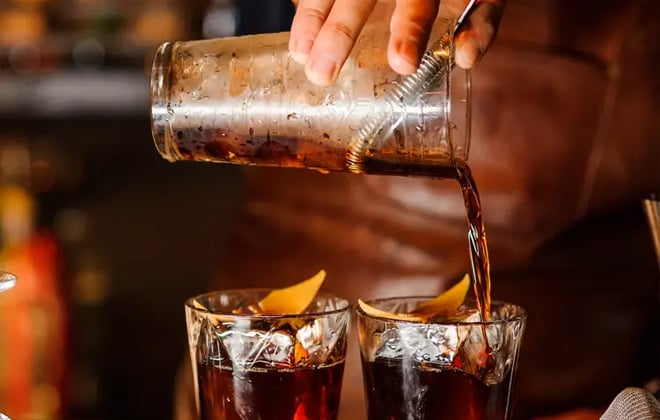On my walk to the bar, I rehearsed “para uno, en la barra está bien” exactly 30 times. I once read about a technique called mega-drilling, suggesting it takes 30 repetitions to cement a memory. I can’t tell you if it works, though. Because when I arrived at Baltra Bar, in Mexico City, my foreignness overpowered my training.
“¿Solo uno?” the host asked.
I froze.
He flipped to English, instructing me to follow him to the bar. While settling onto my stool, he made eye contact with one of the bartenders, gestured to me, and said, “American.”
Even if I had nailed my performance, I suspect the host wouldn’t have been fooled. I was an American in Mexico City. That was an unavoidable fact. A fact the rest of the bar now knew.
It was after 11:00 PM on a Thursday. My first night of a two-week stay. I was there by myself. A voice in the corner of my mind called it “alone.” Cesar Hernandez, a bartender at Baltra Bar, silenced that voice. He made me a cocktail I still think about more than a month later.
Never underestimate the power of a good cocktail. While it might not change the world, it might change someone’s night.
To find out if that same experience is possible to replicate at home, I caught up with Cesar over WhatsApp and talked to a couple of other cocktail professionals to learn what, exactly, makes a cocktail from a bar so much better than the ones mixed up at most home bars. With a few pointers, it turns out you, too, can make cocktail-bar-worthy drinks.
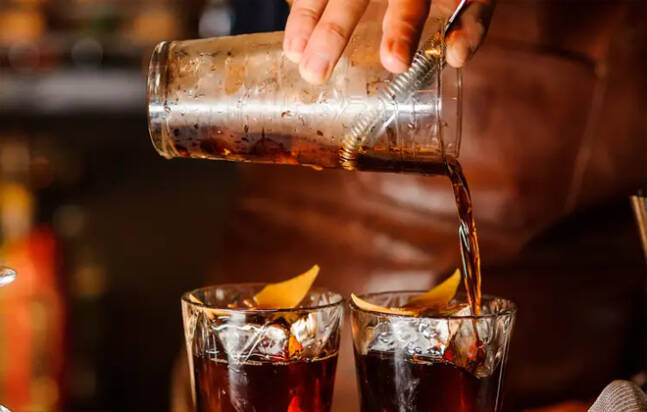
If You Don’t Make It Right the First Time, Make It Again. And Again
Hernandez has been in the service industry for 11 years. Yet, he tells me, it still might take him months to master certain cocktails. The Ramos Gin Fizz, for example. You have to dry shake it for longer and harder than you might think to get the proper amount of foam. Then, you have to place the drink in the freezer to rest for a couple of minutes. These are intricate steps that may take a while to master. You have to get a feel for it, and there’s no shortcut. It just takes repetition. That mega-drilling theory I practiced on the way to Cesar’s bar might come in handy afterall.
Order Drinks That Surprise You. They’ll End Up Inspiring You
Baltra Bar is known for Martinis, but the bartenders are constantly playing with new flavors, new techniques, and new spirits. The cocktail I still dream about was called The Hawk. It’s made with Herradura Ultra Tequila, vodka, grapefruit liqueur, Lillet Blanc, and sake and served in a chilled coupe glass. It sounds strange on paper. Which is exactly why I ordered it.
Hernandez recommends riffing on classics at home to develop a good cocktail you can call your own. “The most important thing when making a cocktail at home is the imagination,” he says.
Take the Mojito as an example. Muddle your mint leaves, lime wedges, and sugar. Then, add ice to the glass and pour in your rum and top with club soda. Stir until thoroughly chilled. But what would adding cucumber or pineapple do?
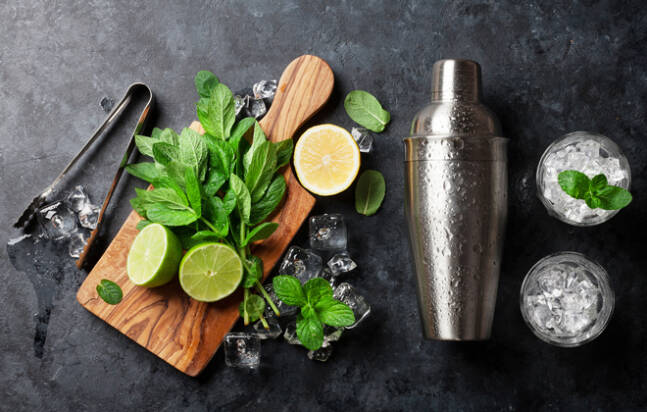
Consider Every Ingredient, Even the Ice
To drink at Williams & Graham in Denver is to drink in the 1920s (without the fear of being locked up for imbibing). You’ll be escorted through a bookcase into a dark, intimate room that you’ll never want to leave. Especially after tasting whatever you order.
My father first guided me through the Williams & Graham doors almost a decade ago. Since then, I make a reservation any time I’m back in Denver. Proprietor Sean Kenyon has been making drinks professionally for more than 35 years and teaches other service industry professionals about spirits.
“You can’t beat some cocktails made at bars,” Kenyon tells me. Case in point: “We have machines that use centripetal force to separate things.” Some things might be too ambitious for your kitchen. And that’s okay.
Yet not everything needs high level science and fancy equipment. Consider ice, a highly overlooked part of the cocktail experience. Kenyon uses a device that creates clear ice spheres, and a similar one on Huckberry will set you back $250. That might be out of your price range for frozen water, but there are ice trays for spheres and large blocks that up the aesthetics and dilute your drink slower.
Customize Your Homemade Syrups
Kenyon shared an Old Fashioned variation with me to put those fancy ice balls to good use. It’s made with two ounces of rye whiskey, .25 ounces of chai simple syrup, three splashes of bitters, and a lemon peel garnish—all of which sound pretty familiar to anyone who has made an Old Fashioned before, except for that syrup.
To make the syrup, steep yourself some chai however strong you like it. Then, use that tea the same way you’d use water to make a one-to-one simple syrup with tea and sugar. Simmer it down until it’s syrupy and it’s ready to use.
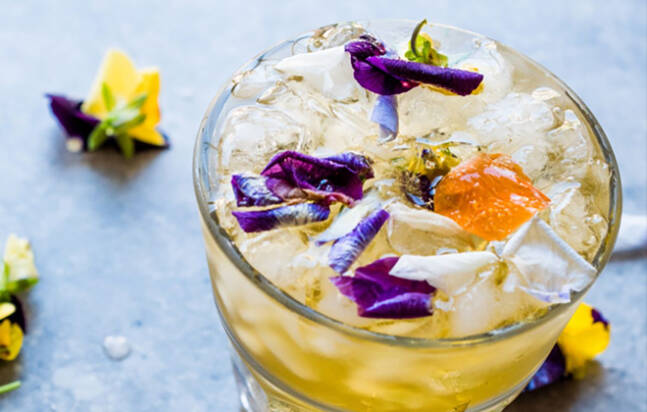
Branch Out With Homemade Cocktail Ingredients
Simple syrup isn’t the only ingredient you should be making for better home cocktails. There’s a wide range of additions that are relatively easy to make and can add flavors to your drinks.
“We create everything in-house except the spirits,” says Nicolas O’Connor, the mixology director at Apotheke, an iconic cocktail bar with locations in New York City and Los Angeles. “It’s all about fresh ingredients.”
Over the phone, he suggests running to your local market, and I picture myself fumbling around a market, aimlessly wandering while simultaneously wondering what could possibly belong in a cocktail. He elaborates that it’s best to start simple. A Gimlet base made with two ounces of spirit and one ounce of sour, for example.
This could be anything: Vodka and lemon juice, tequila and lime juice, whiskey and lemon juice—you get the point.
“Then, add one ounce of puree of any kind,” O’Connor says. “Have fun with it.”
I threw out, “Like blueberries?” still unsure if I was fully grasping the concept.
“Exactly,” he says. In that vodka example, it would mean two ounces of vodka, one ounce of lemon juice, and one ounce of homemade blueberry puree. This formula is your sandbox. Play in it.
Don’t Underestimate the Power of a Good Garnish
O’Connor tells me the Apotheke bar team doesn’t add garnishes for the sake of beauty. That doesn’t mean you won’t find garnishes through an infinite scroll of photos on Instagram. “We add functional garnishes,” he says. “Things that add intentional taste or scent to the drink.”
That’s where an herb garden comes into play. Lavender, lemongrass, basil, mint—any herb can add a refreshing touch to your cocktails.
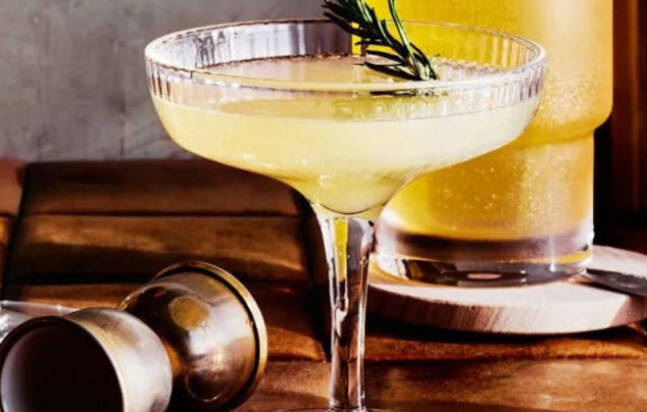
Learn the Classics and Classic Ratios
“At Nouvelle, our cocktail approach is simple,” says John Grisanti, owner and sommelier at Nouvelle Bar & Bottle in Louisville, Kentucky. “We focus on classics because every deviation of a cocktail is not necessarily better than its original.”
On a similar note, there are certain classic ratios that make for consistently solid cocktails. The golden ratio is 2:1:1, meaning two parts spirit, one part sweet, and one part sour. But that’s not the only ratio you should know. For instance, a Negroni is traditionally 1:1:1, equal parts gin, vermouth, and Campari.
“Pay attention to the ratios of the recipes you look up,” Gristanti says. “And keep a journal in your bar. You’ll start noticing patterns. Once you’re confident in executing different ratios, start riffing with different ingredients and tweaking ratios. But always be intentional about those alterations.”
Have Your Mise en Place
Grisanti is an expert in the art of eating and drinking as much as he is about the function of it all. He went to the Culinary Institute of America, so sometimes considers things in chef’s vernacular. Mise en place simply means “putting in place.” In layman’s terms: get your shit organized. In home cocktail terms, it means having the right ingredients and barware in place.
You don’t have to go overboard. Grisanti recommends having the following readily available and set up so you can make a proper cocktail at a moment’s notice:
- Jigger
- Stir slass
- Stir spoon
- Strainer
- Shaker
- Fine mesh Strainer
- Coupe glass
- Rocks glass
- Highball glass

Know the Right Method for the Right Drink
“There are built cocktails, shaken cocktails, and stirred cocktails,” Grisanti tells me.
Build cocktails are built in the glass they’re served in (think Old Fashioned). Shaken cocktails are obviously shaken, and basically any cocktail with citrus is shaken because you have to agitate the citrus to get it to mix with the alcohol. Stirred cocktails are stirred with ice before being poured into a fresh glass, and this method is often used for all-alcohol drinks you don’t want to over dilute with too much melting ice (like a Martini).
Now, if you’ll excuse me. I have some cocktails to make.

